How to Design an Effective Routine for ESL and EFL Children?
Routines
Have you ever wondered what is the best way to create an English learning environment for your ESL and EFL children’s classes? Have you ever thought about supporting your students with some extra practice on a difficult topic? If the answer to these questions is yes, you must be informed about the power that daily routines have in the ESL and EFL children’s classroom.
“But Adriana!” You say. “How should we design an effective children’s routine in the classroom?
Well, it depends…
It depends on the group I’m assigned to each year. For example, right now I am in charge of a really basic and a bit immature third grade, whereas last year I had a fourth grade that behaved like a sixth.
My routine used to be much more demanding the year before than it is now. The songs I’ve chosen for my third graders are much more childish than the ones I used before, but in essence, they both pursue the same objectives:
Objectives of the ESL and EFL children’s routine:
-
To welcome students and create a fun and caring atmosphere.
-
To establish the path and clarify the steps that will be followed together with the class.
-
To promote consistent verbal communication in the target language.
-
To upgrade vocabulary.
-
To drill and set language chunks in students’ minds, to let them be ready to use them in future situations.
Rituals are the core of the ESL and EFL children’s routines:
To achieve these main objectives, I establish rituals; basic ones and more advanced ones. When I say “rituals”, I am not talking about something religious, something related to the metaphysic world; or some type of magic. To me, the word rituals is related to doing things in a certain way and time, and repeating the process every day. The following is a table of my routine steps and the way I use different “ritual variations” to work throughout the year. For many of my students, especially the beginners, the communicative moment is the best part of the routine because this is when they see themselves speaking English. This s where they realize that it is possible and that they can do it too!
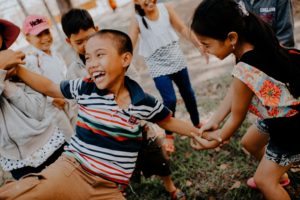
| ROUTINE STEP | RITUAL AT THE BEGINNING OF THE YEAR
(1 – 2 months) |
RITUAL VARIATIONS
(Vary depending on the groups) |
| 1. We sing the greeting song. | We sing along, dance freely, and have fun. I model the pronunciation of the song.
|
· We sing along or a cappella.
· One of us sings, and the rest of us provide supportive feedback. · We sing along, dance freely, and have fun. |
| 2. COMMUNICATIVE MOMENT: We review our survival phrases and learn new dialogues and chunks of langue through role-playing and games.
|
· I model, and my students repeat after me. Then, they role-play the phrases.
· I ask everyone to act out the dialogue both individually and as a group. It is a bit hard, but it’s worth it. |
We include new phrases and more complex conversations that are role-played in groups and individually.
· One child says the phrase, and the rest of the group repeat it. · We do “Show and Tell” presentations. · We play the game of describing and guessing who the person/object is. · Play a short conversational game and reinforce a difficult topic studied before. With intermediate and more advanced students we: · work on an impromptu exercise in which my students speak for one minute about a topic. They don’t have time to prepare. · We talk about any topic of their choice in pairs or groups. Then, I give some general feedback. · Talk about the news or current events. · Tell jokes, etc., etc. |
| 3. Sing along the days of the week, months of the year, seasons, and weather songs.
IMPORTANT: If your group already knows this, you can avoid it and try something new and different.
|
We sing along, dance freely, and have fun. I model the pronunciation of the song.
|
· We sing along or a cappella.
· One of us sings, and the rest of us provides supportive feedback. · We don’t dance or sing but we work on fun puzzles and guessing games on these topics. The idea is to learn to write the vocabulary too. · We sing along, dance freely, and have fun. With intermediate and more advanced students we:
We choose a song every month or every two weeks and learn it by heart. |
| 4. We complete the calendar.
|
I model the questions and answers and my students repeat the basic questions and answers.
Ex: What day is it today? Today is _______? |
· One student asks the class and the whole class answers.
· One student asks and another one answers. |
| 5. We check the attendance. | The T models and the students repeat the questions:
Is ______ here? Yes, he/she is here. |
One student asks and another one answers.
Is ______ here? Yes, he/she is here. |
| 6. Practice mindfulness | I explain to my learners what that is and we follow YouTube videos. | · We focus on our bodies and breathing.
· We color mandalas in silence, listening to some relaxing music. · We listen to the sounds of the environment. · We play with kinetic sand/playdough/marbles /blocks while listening to ASRM or relaxing music videos.
|
| 1. We develop the topic/content of the day.
|
Regular Class
. |
Regular Class
|
| 2. Finally, we sing the clean up, line up, or good-bye song, so that we conclude the class with a cheerful climate.
|
We sing, dance freely, and have fun. | · Sing along or a cappella.
· One of us sings, and the rest of us provide supportive feedback. · We don’t dance or sing, but we work on fun puzzles and guessing games on these topics. We sing, dance freely, and have fun. |
If you want to start implementing a routine in your classroom. Feel free to download these three FREEBIES:
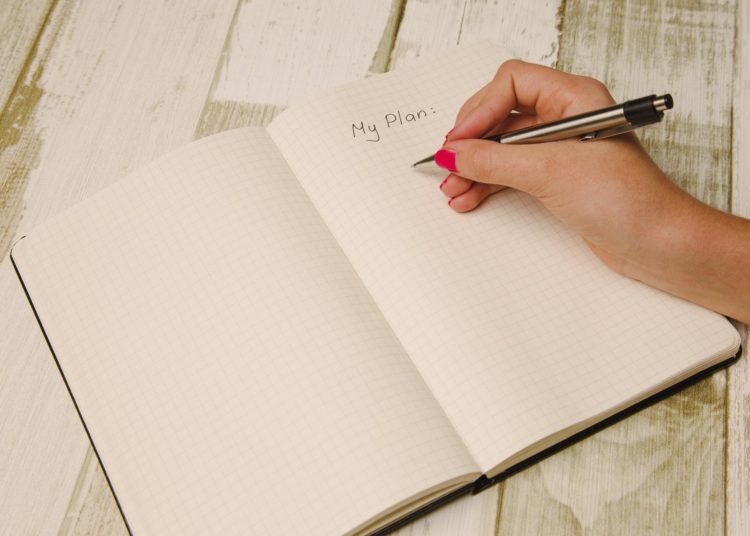
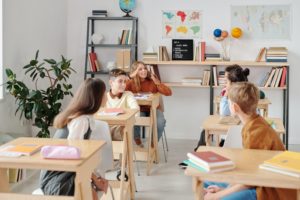
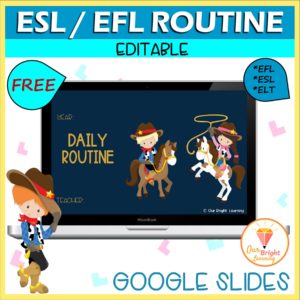
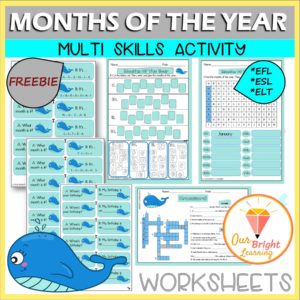






Discussion about this post